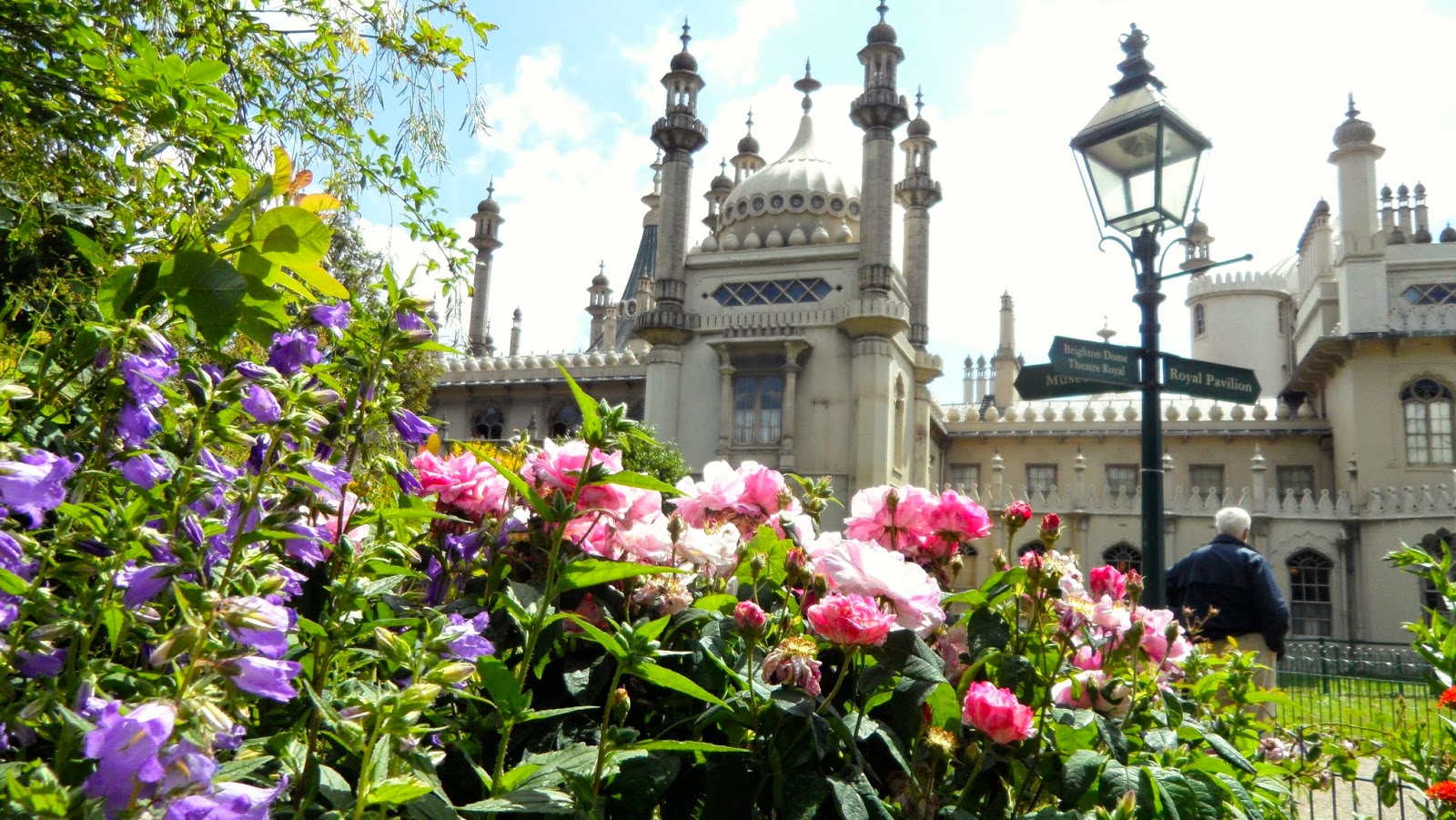The Royal Pavilion, Rottingdean And A Little Miracle in East Sussex
During my recent visit to England Ms. M and I had the pleasure of taking the train to Brighton (Hove) to visit our art loving friend Hugh.
The visit, although way too brief, was pretty wonderful. We got caught up on life, made a visit to a terrific little bakery cafe called Treacle and Ms. M and I spent the morning touring Brighton's Royal Pavilion.
The Royal Pavilion
Regrettably, no photography is allowed inside the Royal Pavilion, but I will never forget the three story dragon chandelier in the banquet room.
In the afternoon Hugh collected us for a drive in the East Sussex countryside. That tour began with a visit to his old Rottingdean neighborhood. Rottingdean was the village where artist Sir Edward Burne-Jones and his nephew (Rudyard Kipling) lived. It is filled with gardens and buildings all built of flint and stone construction. A beautiful example is St. Margarets chapel which (coincidentally) features stained glass by Edward Burne-Jones.
St. Margarets
(Oddly Enough A Copy of This Chapel is Found in Glendale CA at Forest Lawn)
A Close-up of the Flint and Stone Walls
The Kipling Garden's
(Just Across the Street From St. Margarets)
The Rottingdean Windmill Above The Village
(Circa 1802)
Then we were off for lunch at The Rose Cottage Inn in the tiny village of Alciston. Lunch was everything that good English pub food should be (hearty, savory and accompanied by a cool pint of stout). After lunch we walked up the road in Alciston admiring all of the thatched roof cottages and peeking into Alciston's lovely chapel.
But then we came to realize that Hugh had saved the best for last!
We ventured into the little village of Berwick for a visit to St. Michael and All Angels. The Church in one fashion or another dates back to the 1300 and is a bit hard to find (with parking tucked behind a series of high walls). The church has been built and rebuilt over and over throughout the centuries. There are even grooves in the portion of the base of the tower where archers sharpened their arrows before participating in mandatory post church archery practice.
As you approach the church it offers no real clue as to the treasures it holds inside.
Once you enter the church you'll find the 20th century "Bloomsbury" murals. These murals were painted during World War II by Duncan Grant, Vanessa Bell (sister of Virginia Woolf) and her son Quentin Bell. The Bloomsbury Murals were dedicated October 10, 1943.
The Bloomsbury Group was a (sometimes loose) collection of English artists, writers, philosophers, economists, and free thinkers that lived near Bloomsbury London in the early 1900's. Members included E.M Forster, Virginia Woolf and John Maynard Keynes. The Bloomsbury Group had a profound influence on literature and aesthetics, as well as, attitudes toward feminism and pacifism.
The artists were a natural choice for the murals as they summered in nearby Lewes at Charleston. Their Charleston home and gardens may be toured from March until November.
As you approach the church it offers no real clue as to the treasures it holds inside.
St. Michael and All Angels
Berwick
Once you enter the church you'll find the 20th century "Bloomsbury" murals. These murals were painted during World War II by Duncan Grant, Vanessa Bell (sister of Virginia Woolf) and her son Quentin Bell. The Bloomsbury Murals were dedicated October 10, 1943.
The Bloomsbury Group was a (sometimes loose) collection of English artists, writers, philosophers, economists, and free thinkers that lived near Bloomsbury London in the early 1900's. Members included E.M Forster, Virginia Woolf and John Maynard Keynes. The Bloomsbury Group had a profound influence on literature and aesthetics, as well as, attitudes toward feminism and pacifism.
The artists were a natural choice for the murals as they summered in nearby Lewes at Charleston. Their Charleston home and gardens may be toured from March until November.
Christ In Glory
Duncan Grant 1942
The Sailor, Airman and Soldier Kneel In Gaze at Bishop Bell
Models Where Local Men - The Soldier (Douglas Hemming) was Killed in Caen in 1944
Victory At Calvery
Duncan Grant
Supper At Emmaus
Quentin Bell
(Virginia Woolf's Husband Modeled for Christ)
The Sacraments
Quentin Bell
Baptism
Communion
Marriage
Last Rites
Confession Communion
The Seasons
Duncan Grant
Spring
Summer
(My Favorite)
Autumn
Winter
The Berwick Chapel
Rain Leader
East Sussex Countryside Just Adjacent the Church
Just Steps From The Church
Rewards You With Views of The South Downs and Firlie Beacon
Brighton and Hove are a short train ride from London. All in all we packed a lot into the single day we had. A big thanks to Hugh for such a wonderful visit!
Roadboy's Travels © 2014


















































